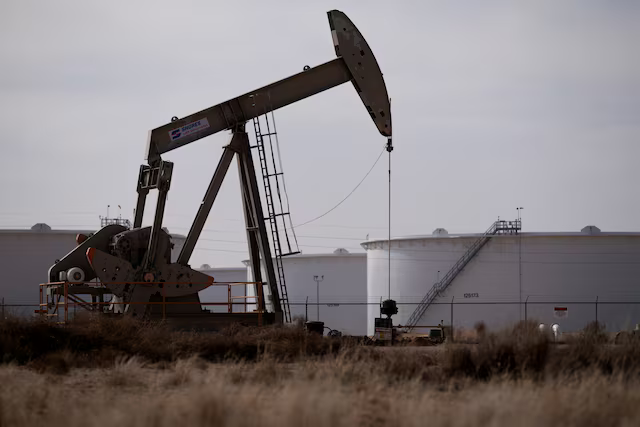Oil prices fell sharply on Wednesday, reaching their lowest levels in more than four years as rising trade tensions between the United States and China raised concerns over global demand, Reuters reports.
The decline follows the US government’s decision to impose a 104% tariff on Chinese imports, while China has maintained its own tariffs on US goods.
Brent crude futures dropped $2.13, or 3.39%, to $60.69 per barrel as of early Wednesday trading (0108 GMT). US West Texas Intermediate (WTI) crude futures fell by $2.36, or 3.96%, to $57.22 per barrel. Brent reached its lowest price since March 2021, while WTI fell to its lowest level since February 2021.
Both benchmarks have now posted declines for five consecutive trading sessions, as fears of a prolonged trade war have unsettled markets. Investors are concerned that heightened tariffs could slow economic growth and reduce fuel demand globally.
The White House confirmed that the 104% tariff on Chinese imports took effect at 12:01 a.m. EDT (0401 GMT) Wednesday, after Beijing did not remove its existing retaliatory tariffs by the US-set deadline. In response, China has maintained its 34% tariff on American goods, with officials calling the US measures a form of “blackmail.”
Market analysts warn that these escalating trade tensions may have significant economic consequences. Ye Lin, vice president of oil commodity markets at Rystad Energy, noted that China’s oil demand growth—estimated at between 50,000 and 100,000 barrels per day—could be at risk if the trade dispute persists. However, she added that Beijing may implement domestic stimulus measures to offset potential losses.
Adding to the downward pressure on oil prices is an expected increase in supply. The Organization of the Petroleum Exporting Countries (OPEC) and its allies, known as OPEC+, announced last week that they will increase oil production by 411,000 barrels per day starting in May. Analysts believe this move could lead to an oversupply in the market.
In light of these factors, Goldman Sachs has revised its oil price forecasts, now predicting Brent crude could decline to $62 per barrel by December 2025 and $55 per barrel by December 2026. Similarly, WTI is expected to drop to $58 per barrel by the end of 2025 and $51 per barrel by the end of 2026.
Despite the broader concerns over demand and supply, there was one positive indicator in the market. The American Petroleum Institute reported that US crude inventories fell by 1.1 million barrels in the week ending April 4, contrary to analysts’ expectations of a 1.4 million-barrel increase. Official data from the US Energy Information Administration is expected to be released later Wednesday, which could provide further insights into market trends.








The latest news in your social feeds
Subscribe to our social media platforms to stay tuned